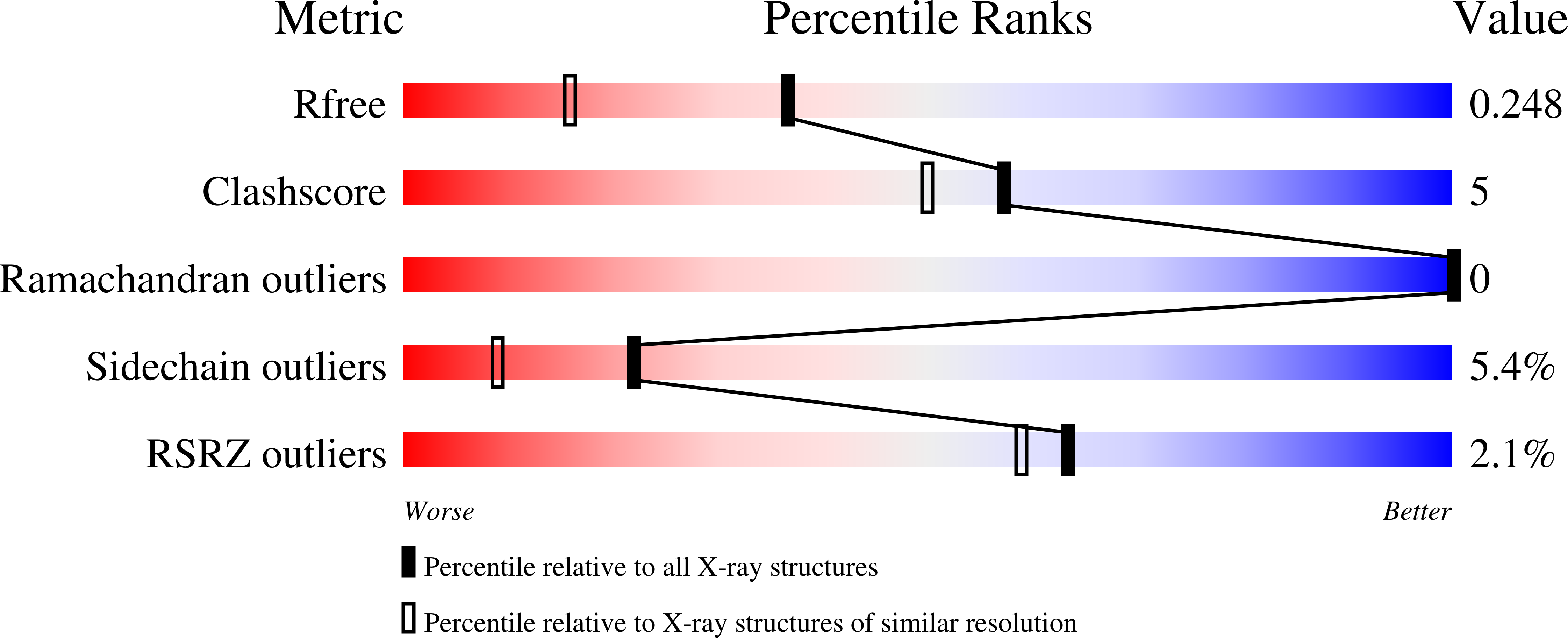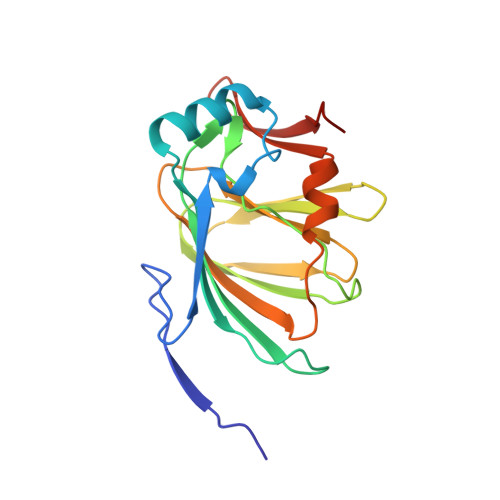Structural evidence for a hydride transfer mechanism of catalysis in phosphoglucose isomerase from Pyrococcus furiosus
Swan, M.K., Solomons, J.T.G., Beeson, C.C., Hansen, T., Schonheit, P., Davies, C.(2003) J Biol Chem 278: 47261-47268
- PubMed: 12970347
- DOI: https://doi.org/10.1074/jbc.M308603200
- Primary Citation of Related Structures:
1QXJ, 1QXR, 1QY4 - PubMed Abstract:
In the Euryarchaeota species Pyrococcus furiosus and Thermococcus litoralis, phosphoglucose isomerase (PGI) activity is catalyzed by an enzyme unrelated to the well known family of PGI enzymes found in prokaryotes, eukaryotes, and some archaea. We have determined the crystal structure of PGI from Pyrococcus furiosus in native form and in complex with two active site ligands, 5-phosphoarabinonate and gluconate 6-phosphate. In these structures, the metal ion, which in vivo is presumed to be Fe2+, is located in the core of the cupin fold and is immediately adjacent to the C1-C2 region of the ligands, suggesting that Fe2+ is involved in catalysis rather than serving a structural role. The active site contains a glutamate residue that contacts the substrate, but, because it is also coordinated to the metal ion, it is highly unlikely to mediate proton transfer in a cis-enediol mechanism. Consequently, we propose a hydride shift mechanism of catalysis. In this mechanism, Fe2+ is responsible for proton transfer between O1 and O2, and the hydride shift between C1 and C2 is favored by a markedly hydrophobic environment in the active site. The absence of any obvious enzymatic machinery for catalyzing ring opening of the sugar substrates suggests that pyrococcal PGI has a preference for straight chain substrates and that metabolism in extreme thermophiles may use sugars in both ring and straight chain forms.
Organizational Affiliation:
Department of Biochemistry and Molecular Biology, Medical University of South Carolina, 173 Ashley Avenue, Charleston, SC 29425, USA.















